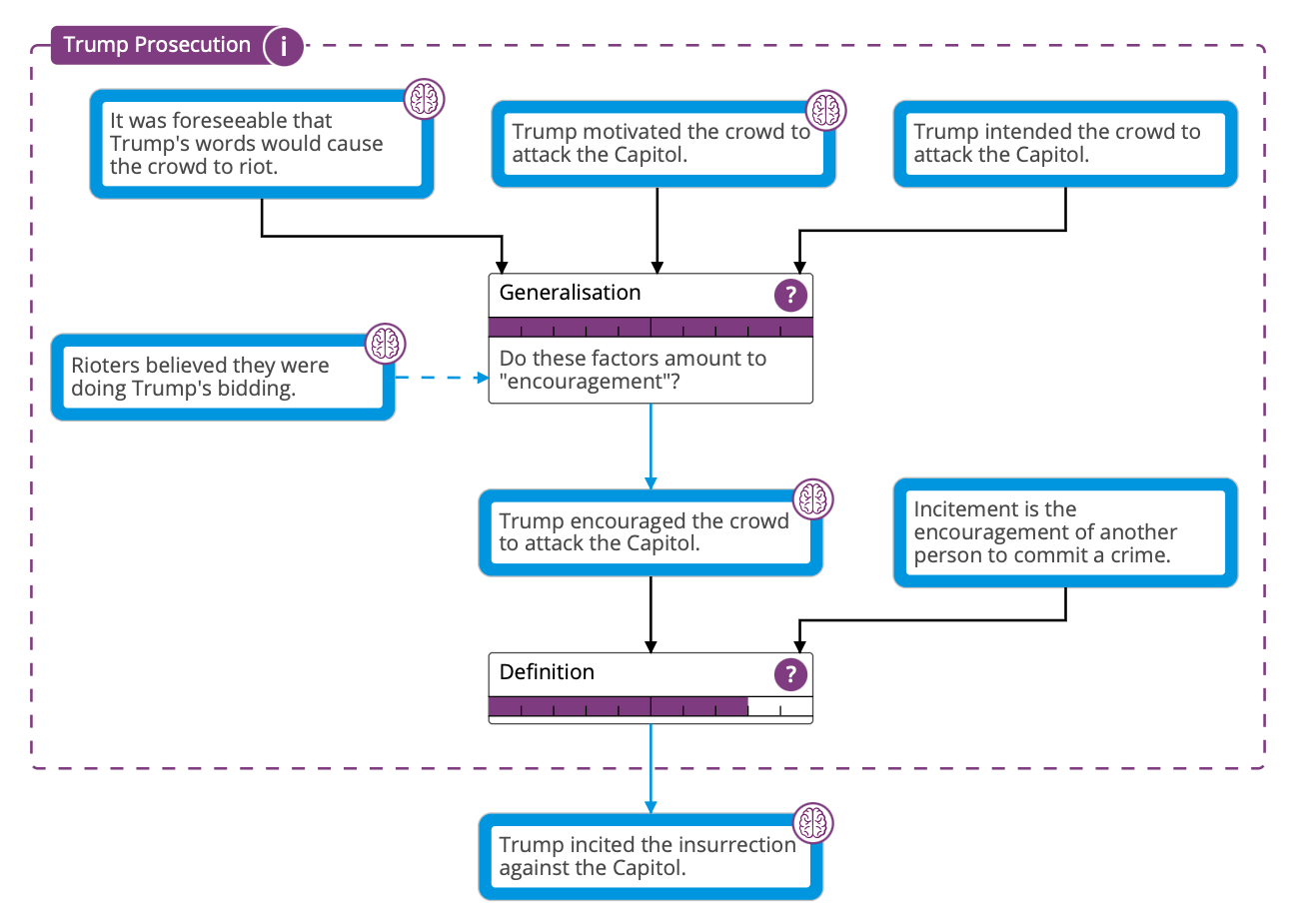
01 Mar Donald Trump’s Second Impeachment
Endoxa Learning Content is Up to Date
Unlike a textbook, Endoxa Learning is always being updated. Here is an example of being able to bring our content up to date. The prosecution and defence arguments from the second Trump impeachment trial have been made into a lesson less than one month after the trial took place and added to our A level Politics content. The image is an extract from the argument graph on which this lesson is based, showing the core of the prosecution’s argument.
As well as following current affairs, we are also able to respond to our users’ comments and to the modifications they make to the argument graphs in our system. If someone thinks of a new branch to an argument it can be added to the lesson and then everybody benefits. In this way, the content is always growing and improving.

Complex Arguments are Presented Step-by-Step
This case study also demonstrates some interesting features of how Endoxa Learning represents arguments. Here is a screenshot of the whole of the Trump impeachment argument graph, from the point of view of the prosecution (note: blue statements are true and red are false). It’s an extensive network of arguments, so the diagram is quite big and perhaps a little intimidating. Previous argument mapping softwares have struggled with getting across complex arguments like this. But Endoxa Learning handles this by taking a step-by-step approach.
The argument is formed of a number argument steps, each of which connects its premises to its conclusion via an argument type. The argument steps are joined together to form the whole argument. When the student starts the lesson, the argument steps are presented one-by-one. At the end, the student sees the whole argument graph, but only after they have understood all the steps which comprise it. Then the student can appreciate the overall structure of the argument, without being confused by the detail.
Representing Competing Points of View
Another aspect of the Endoxa Learning software is its ability to represent different points of view. Here is a screenshot of the same argument, but from the point of view of the defence. All of the boxes and arrows are the same. What is different is the colours of the statement boxes. For the Trump impeachment, where the prosecution judges some premise to be true, the defence judges them to be false, and vice-versa. The different points of view of the two sides with respect to the same collection of arguments is represented in this way.
In general, the structure of the argument graph (what is connected to what) represents the arguments in play, and the colours represent their evaluation. The arguments are objective – a matter of how reasoning works. But the evaluation of those arguments is subjective. As can be seen from this example, two different people’s evaluations can differ a lot. Endoxa Learning does not allow arguments which are incoherent; a statement greys out when it is in conflict. But it does allow different, coherent points of view.
In argument, it is vital to understand the opponent’s point of view, so that it can be challenged with further argument. Is the evaluation of the premises by the defence reasonable, how could they be challenged, and so on.
Teachers: Request a Demo of Endoxa Learning
We can show you how the software works over a video conference and even talk about the Trump impeachment arguments!


